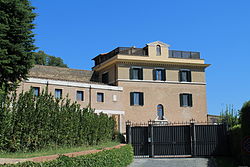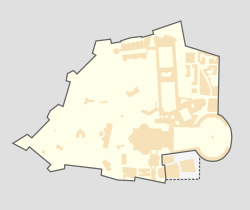Monastero Mater Ecclesiae | |
 | |
| Monastery information | |
|---|---|
| Order | Poor Clares et al. |
| Established | c. 1990 |
| Dedicated to | Mary, Mother of the Church |
| Diocese | Rome |
| People | |
| Founder(s) | Pope John Paul II |
| Important associated figures | Pope Emeritus Benedict XVI |
| Architecture | |
| Functional status | private residence |
| Groundbreaking | 1992 |
| Completion date |
|
| Site | |
| Coordinates | 41°54′14″N12°27′04″E / 41.90389°N 12.45111°E |
The Mater Ecclesiae Monastery (Latin for "Mother of the Church" dedicated to Mary) is a monastery in Vatican City. It was founded around 1990 by Pope John Paul II as a monastery for cloistered nuns who pray specifically for the health of the pope. Various cloistered orders are invited to take up residence for a time. It served as the residence of Pope Benedict XVI from his resignation in 2013 until his death in 2022. In 2023, Pope Francis returned it to its monastic purpose with an invitation to Benedictine nuns of the Abbey of St. Scholastica in Victoria, Argentina. [1]

